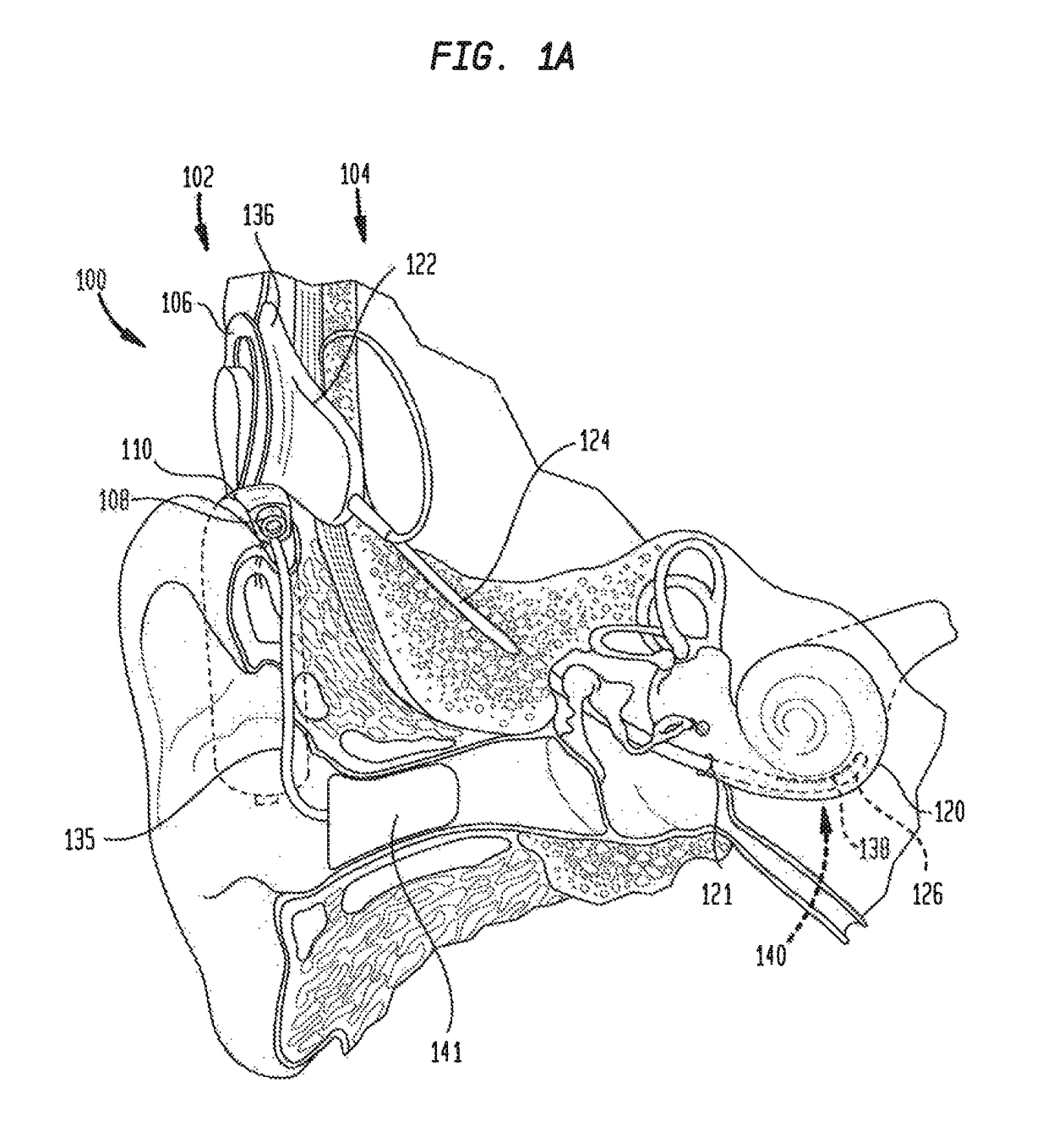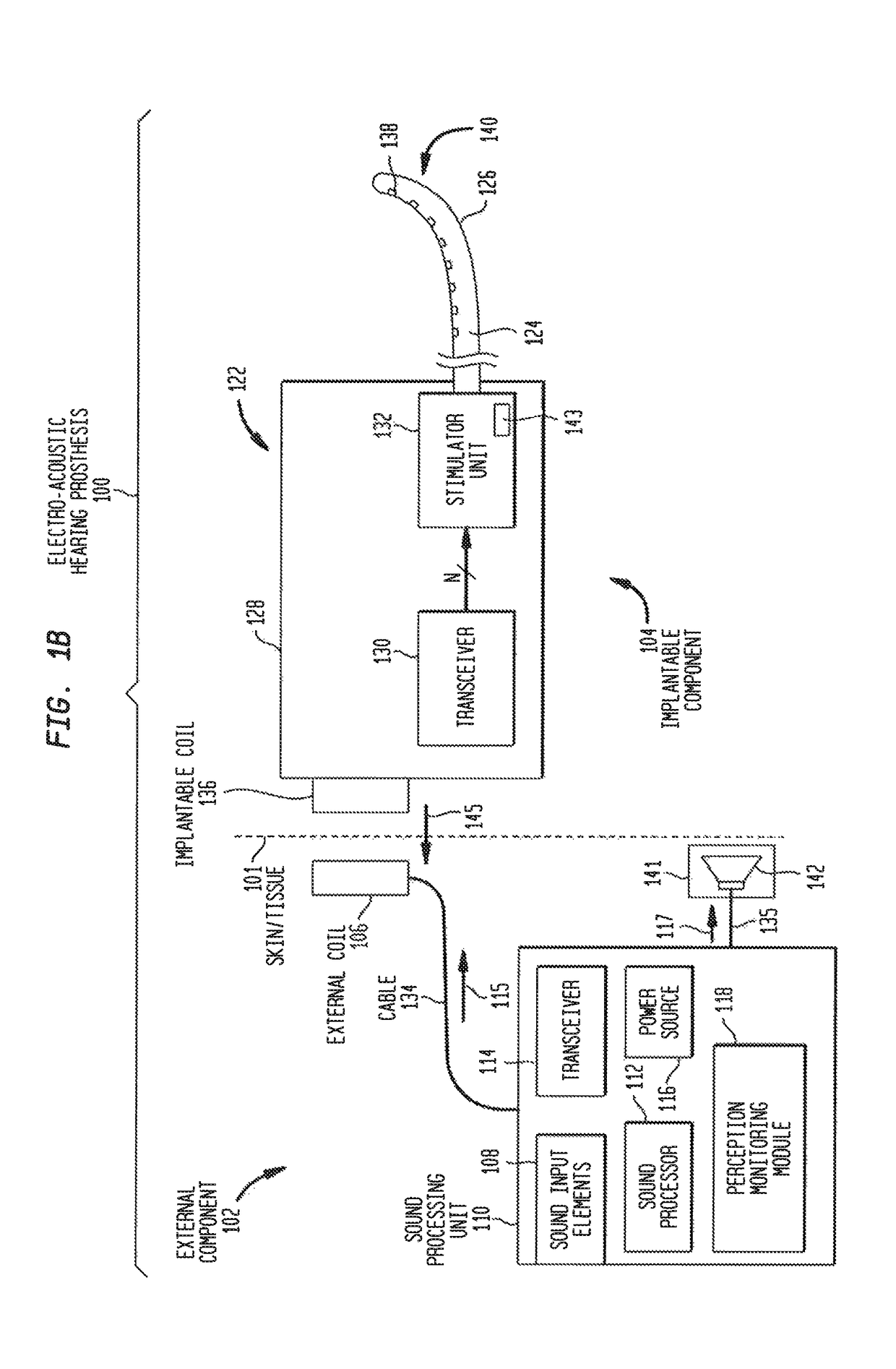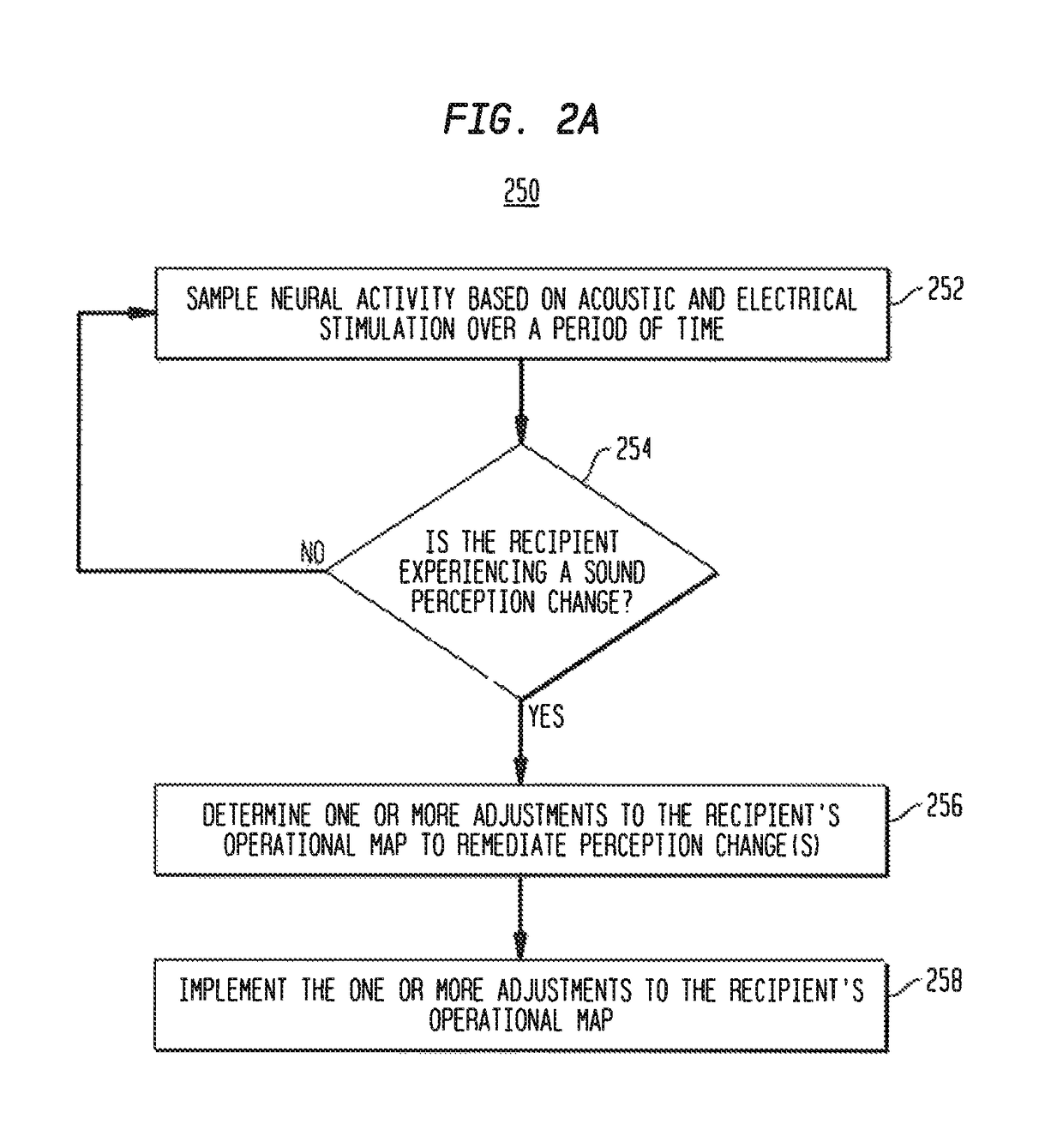Perception change-based adjustments in hearing prostheses
a technology of hearing prosthesis and change, applied in the field of hearing prosthesis, can solve the problems of conductive hearing loss, deafness, sensorineural hearing loss,
- Summary
- Abstract
- Description
- Claims
- Application Information
AI Technical Summary
Problems solved by technology
Method used
Image
Examples
Embodiment Construction
[0019]Auditory / hearing prosthesis recipients suffer from different types of hearing loss (e.g., conductive and / or sensorineural) and / or different degrees / severity of hearing loss. However, it is now common for many hearing prosthesis recipients to retain some residual natural hearing ability (residual hearing) after receiving the hearing prosthesis. For example, progressive improvements in the design of intra-cochlear electrode arrays (stimulating assemblies), surgical implantation techniques, tooling, etc. have enabled atraumatic surgeries which preserve at least some of the recipient's fine inner ear structures (e.g., cochlea hair cells) and the natural cochlea function, particularly in the lower frequency regions of the cochlea.
[0020]Due, at least in part, to the ability to preserve residual hearing, the number of recipients who are candidates for different types of implantable hearing prostheses, particularly electro-acoustic hearing prostheses, has continued to expand. Electro-...
PUM
 Login to View More
Login to View More Abstract
Description
Claims
Application Information
 Login to View More
Login to View More - R&D
- Intellectual Property
- Life Sciences
- Materials
- Tech Scout
- Unparalleled Data Quality
- Higher Quality Content
- 60% Fewer Hallucinations
Browse by: Latest US Patents, China's latest patents, Technical Efficacy Thesaurus, Application Domain, Technology Topic, Popular Technical Reports.
© 2025 PatSnap. All rights reserved.Legal|Privacy policy|Modern Slavery Act Transparency Statement|Sitemap|About US| Contact US: help@patsnap.com



